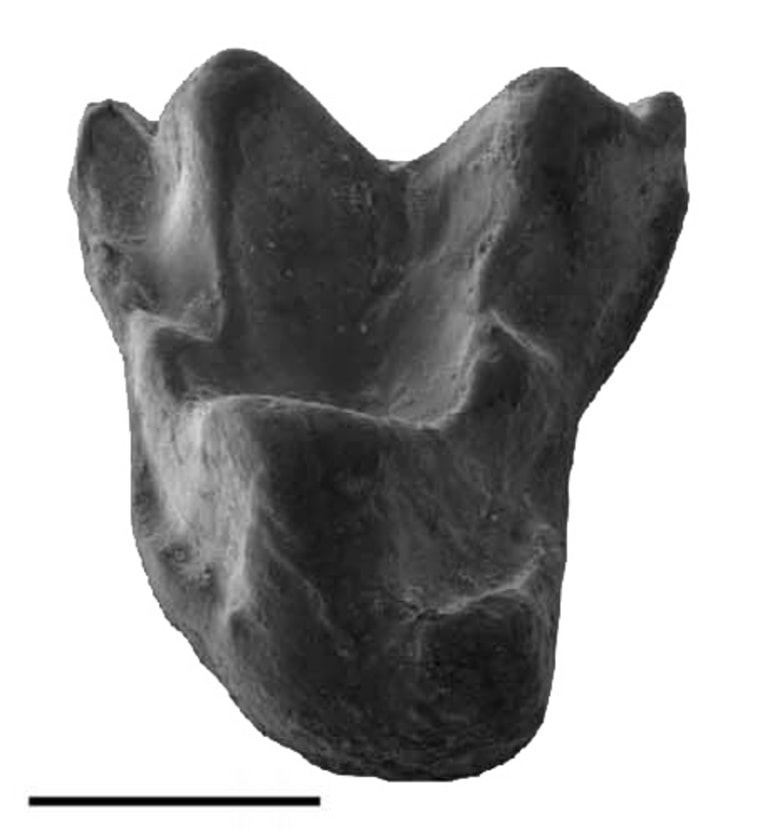The teensy teeth of a squirrel-sized primate discovered in an Indian open-pit coal mine suggest it chomped on insects galore in the lush rainforest where the animal lived nearly 55 million years ago, researchers say.
"You could fit all four of [the teeth] onto the end of a pencil, the blunt end of a pencil," said researcher Richard Kay, an evolutionary anthropologist at Duke University.
The four teeth from Anthrasimias gujaratensis could stretch the timeline for primates (the group that includes lemurs, monkeys, apes and humans) in Asia back nearly 10 million years and could represent the oldest known Asian remains of anthropoids (also called simians or "higher" primates, a subset that basically excludes lemurs, lorises and tarsiers). For instance, unlike lemurs, anthropoids sport both eyes directly on the front of the face, giving total overlap of the two fields of vision.
Previous fossil evidence shows primates were living in North America, Europe and Asia at least 55 million years ago. But the researchers say that until now, the fossil record of anthropoids in Asia extended back only 45 million years.
"Anthrasimias may also be the oldest anthropoid in the world," the researchers write this week in the journal for the Proceedings of the National Academy of Sciences. The "may" reflects the fact that some scientists think slightly older fossils found in a Moroccan limestone deposit also could have been from an anthropoid, Kay said.
The new finding does not confirm with certainty the presence of Anthrasimias, a primitive anthropoid, in Asia, said Erik Seiffert, a vertebrate paleontologist at Stony Brook University in New York, who was not involved in the current study.
"I think that the fossils provide a few tantalizing clues that are consistent with an early presence of primitive anthropoid primates in Asia," Seiffert told LiveScience. "But I think that to have real confidence in the conclusions we need more material from the skeleton of this animal Anthrasimias, so from its cranium limbs and hands and feet."
The researchers used microscopic marine plankton fossils of a known age in nearby rock layers to calculate when the teeth were still connected to an animal that was alive and chomping. In order to reconstruct Anthrasimias' diet, the team also compared the teeth with those from today's primates, including dwarf lemurs, tarsiers and lorises.
The teeth's size and shape suggest the primate weighed about 2.6 ounces (75 grams) with a petite build similar to that of dwarf lemurs.
"What we can say from the teeth is that these animals were also probably largely or significantly insectivorous," Kay said. "They ate a lot of insects in their diet."
The new research was funded by the Department of Science and Technology, Government of India, Duke University and National Science Foundation.
